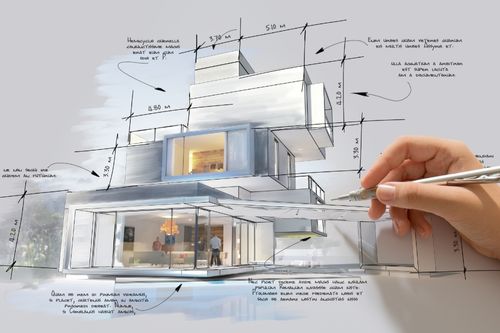The Important Role of an Engineer in Shaping Lasting Urban Environments for Future Generations
The duty of an engineer in crafting lasting metropolitan environments is increasingly pivotal in reacting to the difficulties of climate change and urbanization. By seamlessly incorporating environmental principles into their designs, engineers not just enhance the visual and useful high quality of urban rooms however also address pushing concerns such as energy efficiency and social equity.
Comprehending Sustainable Urban Layout
Sustainable urban style integrates eco-friendly principles with city planning to create atmospheres that are not only comfortable but additionally durable. This approach highlights the importance of including natural systems right into the metropolitan textile, making certain that development satisfies the requirements of today without endangering the capacity of future generations to fulfill their very own needs. Crucial element of lasting city style consist of efficient land usage, the promotion of biodiversity, and the combination of environment-friendly areas, all of which add to enhanced lifestyle for citizens.
Additionally, lasting city style focuses on the reduction of the metropolitan heat island impact, boosted air quality, and reliable stormwater management. It motivates the usage of renewable resources and energy-efficient structure practices, which dramatically lower carbon footprints. Sustainable metropolitan design cultivates social equity by creating available public areas and promoting mixed-use advancements that provide to diverse populations.
Through thoughtful planning and innovative design methods, lasting city settings can boost area resilience versus climate change while fostering economic development. This all natural method not just addresses instant metropolitan difficulties however also lays the groundwork for healthier, much more sustainable cities for generations to come.
Key Duties of Engineers
Engineers play a crucial function in forming sustainable metropolitan settings by converting style principles into concrete frameworks and areas. Their obligations encompass a large range of activities that add to the general success of metropolitan design projects.
Primarily, engineers carry out complete site analyses to recognize the environmental, social, and social context of their jobs. This fundamental understanding notifies their style decisions, making sure that buildings integrate with their environments. They likewise take part in joint processes with stakeholders, consisting of city organizers, engineers, and the area, fostering a comprehensive technique to urban growth.
In addition, engineers are tasked with developing designs that maximize energy effectiveness, source conservation, and capability. They need to adhere to regional zoning laws, developing codes, and sustainability accreditations, ensuring compliance while pressing the boundaries of technology.
Additionally, architects are accountable for taking care of the design procedure, coordinating with numerous professionals throughout the building stage to ensure that the vision is recognized accurately (cda architects). Eventually, their duty is not solely regarding visual appeals; it is concerning creating durable, flexible rooms that enhance the lifestyle for present and future generations, preparing for lasting look at this now city living
Ingenious Materials and Techniques

Additionally, innovations in technology have actually led to the development of high-performance products, such as shielded concrete kinds (ICFs) and photovoltaic glass, which add to energy preservation and harness sustainable power. Methods such as passive solar layout and environment-friendly roofs further exemplify exactly how design can harmonize with all-natural systems, decreasing dependence on synthetic home heating and air conditioning.
In addition, the combination of smart materials, which adjust to environmental adjustments, provides encouraging opportunities for boosting structure efficiency. These materials can reply to temperature level changes or dampness levels, enhancing convenience and sustainability.
Eventually, the critical selection and application of innovative materials and strategies empower engineers to produce city spaces that are not just useful and aesthetically pleasing however also durable and eco responsible, making sure a lasting future for generations to find. cda architects.
Community Engagement and Collaboration
The success of ingenious materials and methods in sustainable urban architecture is significantly improved by energetic area engagement and cooperation. Engineers must recognize that the built environment greatly impacts the lives of regional residents, making it crucial to include them in the style process. Involving the neighborhood cultivates a feeling of possession and liability, making sure that developments not only fulfill visual and practical needs however also mirror the values and goals of those that inhabit them.

Successful neighborhood engagement also helps in prioritizing social equity within metropolitan advancement. By taking into consideration the voices of marginalized populaces, engineers can develop rooms that are comprehensive and fair. By doing this, community engagement and collaboration become integral to achieving truly sustainable urban environments that serve the needs of current and future generations.
Future Trends in Sustainable Architecture
An arising emphasis on flexible reuse and circular economic situation concepts is readied to redefine the landscape find of sustainable design. As cities grapple with increasing populace thickness and ecological difficulties, designers are progressively turning to strategies that maximize existing frameworks rather than pursuing brand-new builds. This technique not just preserves social heritage yet likewise substantially decreases resource intake and waste.
Furthermore, advancements in modern technology are forming future trends in lasting design. The integration of smart products and building systems permits real-time power management, boosting effectiveness and decreasing carbon impacts. Technologies such as eco-friendly roofing systems, living wall surfaces, and energy-generating exteriors are becoming typical methods, even more advertising environmental balance within city atmospheres.
Moreover, a change towards biophilic layout is getting grip, highlighting the link between nature and human health. By incorporating natural aspects, engineers produce rooms that promote mental health while advertising biodiversity.
Final Thought
Finally, designers are pivotal in progressing lasting metropolitan atmospheres through their knowledge in design, cutting-edge materials, and community involvement. By prioritizing energy efficiency and source preservation, these experts add to the creation of resistant city spaces that satisfy the needs of present and future generations. The assimilation of ecological concepts not only boosts livability but also promotes social equity, guaranteeing developments reverberate with the values and ambitions of the communities they serve.